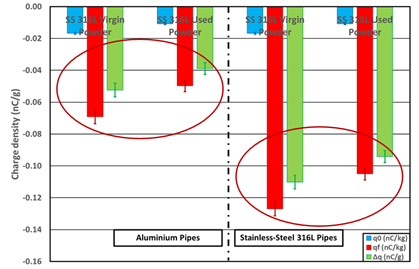


Granutools is also a supplier of powder characterization instruments for the additive manufacturing industry. Working with top tiers R&D centers, we have developed unique know-how available to our customers.
Granutools unique powder characterization Workflow for AM powders offers best-in-class process optimization. And this means better parts, faster ramp-up, and smarter powder lifecycle management.
We will tell you how your AM Precursors must look like!
 |
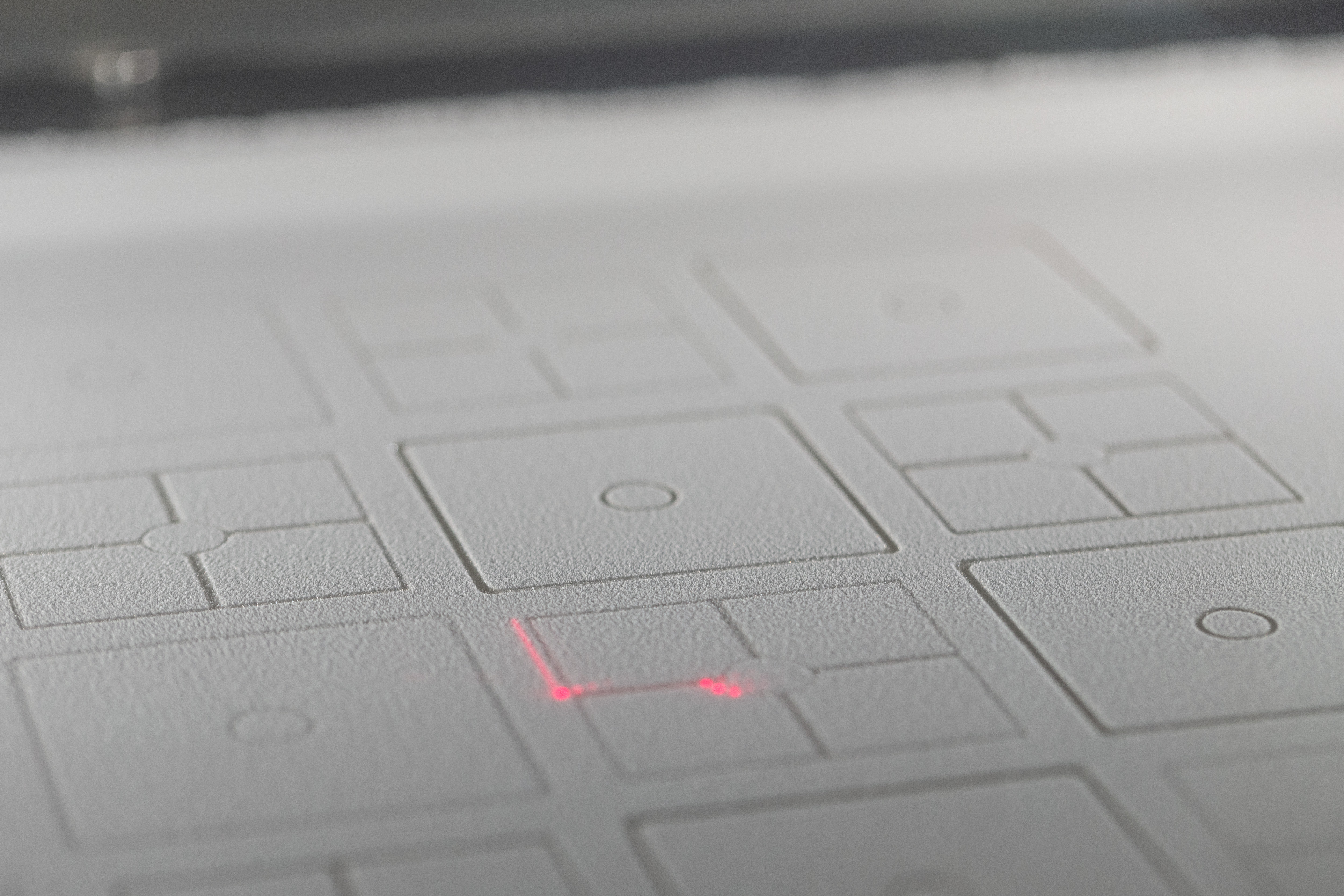 |
The image above is the Granutools Additive Manufacturing Workflow. This workflow comprises three instruments: Granudrum for spreadability, Granupack for packing dynamics, and Granucharge for electrostatics assessment.
GT is an unmissable stop for anyone taking additive manufacturing seriously. You have purchased your new printer, now let’s start to print. Soon you discover that it takes much more to get good parts out of it. Contact us and talk to our experts!
In SLS (selective laser sintering), SLM (selective laser melting), and EBM (electron beam melting) techniques, successive thin layers of powder are created with a ruler or with a rotating cylinder. Each layer is partially sintered or melted with an energy beam (laser or electron beam). The layer thickness defines the vertical resolution. Therefore, a thin layer leads to a better resolution
In order to obtain a thin layer, the powder is as fine as possible. Unfortunately, when the grain size decreases, the cohesiveness increases and the flowability decreases. Moreover, the powder becomes more and more sensitive to moisture. Therefore, a compromise between grain size and flowability has to be found.
The quality of the parts build with AM is directly related to the powder flowing properties. The flowability must be good enough to obtain homogenous successive powder layers.
For all the processing methods dealing with powder, the measurement method used to characterize the powder should be as close as possible to the process. In particular, the stress state and the flow field of the powder should be comparable in the measurement cell and in the process.
Different recent publications are evidencing that the classical flowmeters are unable to give pertinent information about powder flow behavior in powder-bed-based additive manufacturing.
In shear cell testers, the existence of a compressive load is incompatible with the free surface flow used in AM devices. The measurement method based on the rotating drum is a good candidate because the powder flow is analyzed precisely at the powder/air interface without any compressive load. Moreover, the rotating drum geometry allows studying the natural aeration of the powder during the flow.
In addition to the flowability, the powder packing fraction is an important parameter. Indeed, a high packing fraction reduces the porosity of the produced part. Therefore, a precise measurement of the range of packing fractions accessible by the powder is also necessary.
The spreadability is a key parameter in a printer. A bad spreadability gives a nonflat powder bed which leads to bad printing. You need to be sure your powder will spread well with a given configuration. Several parameters influence this spreadability: the recoater shape and material, the environmental conditions (gas, humidity, temperature), the recoater speed, and finally the powder. In order to avoid the downtimes of the printer and therefore reduce the costs, you have to have a preventive test. This is the reason why we developed the GranuDrum. The device allows a pass/fail test for spreadability as its measurement outcome is directly correlated to the spreadability of the recoater.
Here is an example from Powder Technology 283 (2015) 199–209
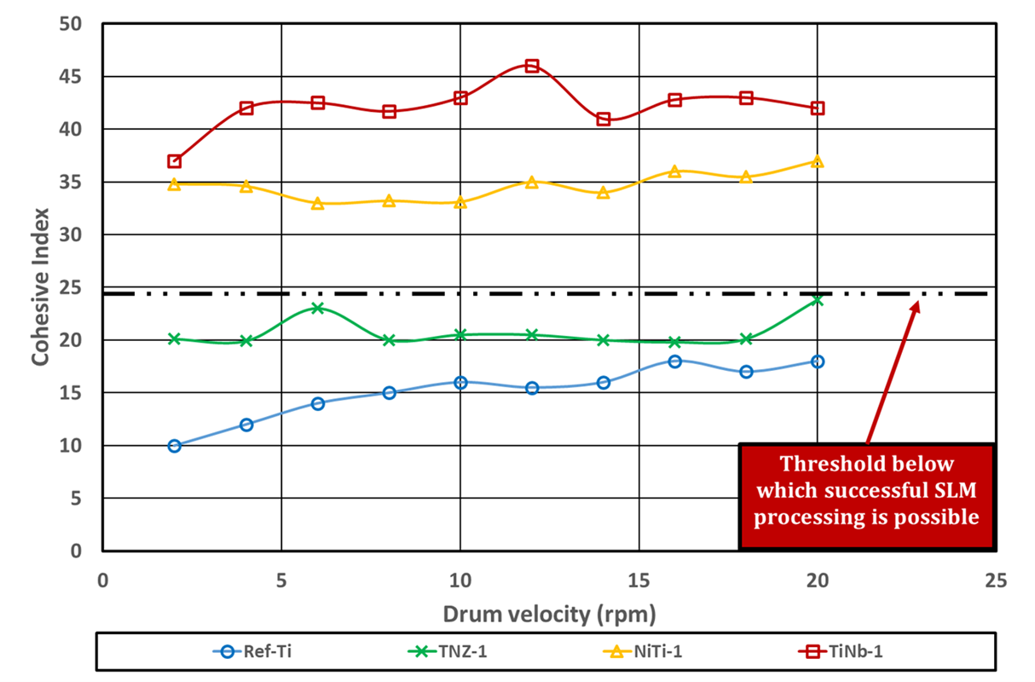
All powder with a cohesive index under a certain threshold that depends on the printer and its parameters will work out fine.


Are you sure about the quality of your feedstocks? The QC from batch to batch is important for a smooth and homogeneous production through time. The only way to ensure it is to control the quality of your feedstock. What is the best measurement method to assess it? The best device for QC is a precise one. In order to observe thin differences between the powders based on a number. With the GranuPack and its 0,4% accuracy, you can easily differentiate your powders in a precise way. In the application shown here below, any phenomenon larger than 4% can be detected as seen below. It will pick up a very small variation due to the presence of fine, re-using the powder does not affect the particle themselves.
Here are some examples from EuroPM 2019 conference proceedings, courtesy of Sirris, Belgium.
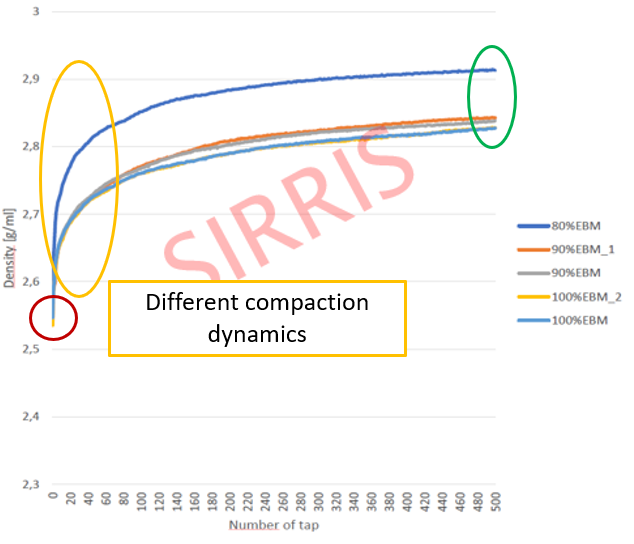
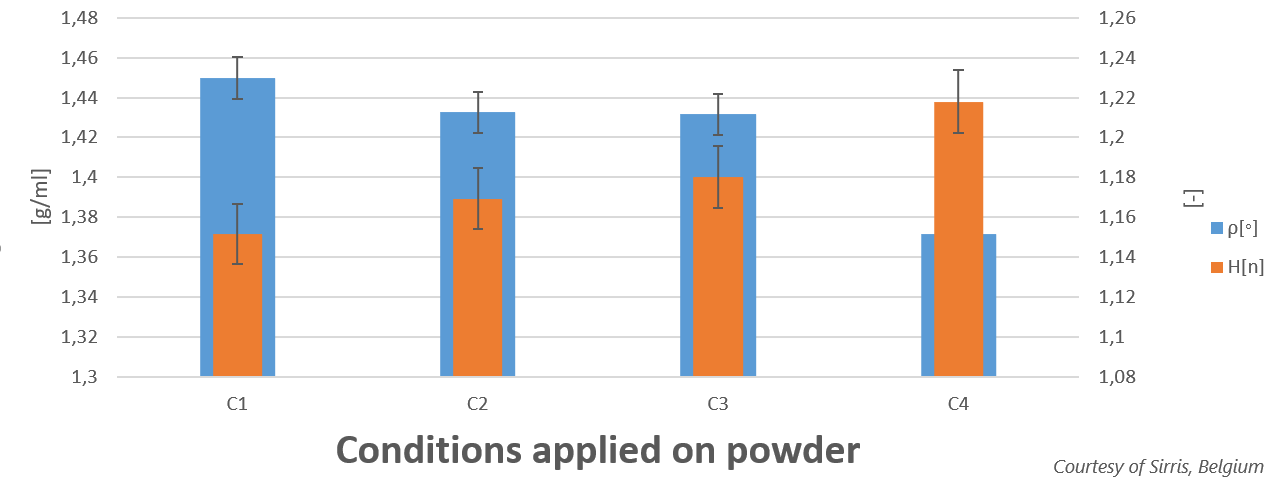
Powders are expensive. After a printing process, you only use a fraction of this powder. Recycling and reusing the powder is essential to reduce the costs. In that way, you must have a good way to assess the quality of the recycled powder.
Will the re-used powder behave the same way?
How much re-used powder can I add to the virgin one without creating trouble? Can I configure my printer, so it works in the same way with virgin and used powders?
These questions need answers to avoid issues, bad powder beds, downtimes of the printer.
Our range of tools can assess powder behavior. We can assess the flow, cohesion, and packing of your powders. With high precision and repeatability.
The GranuPack, with an accuracy of 0.4% will be able to highlight really thin differences between the powders. As shown here in the graph, with the virgin powder, recycled powder, and the mix (virgin + re-used).
Reference: Granutools, application note (2018)

Another possibility highlighted with metal powders is to use the Granucharge to monitor the effect of recycling powders used in additive manufacturing
